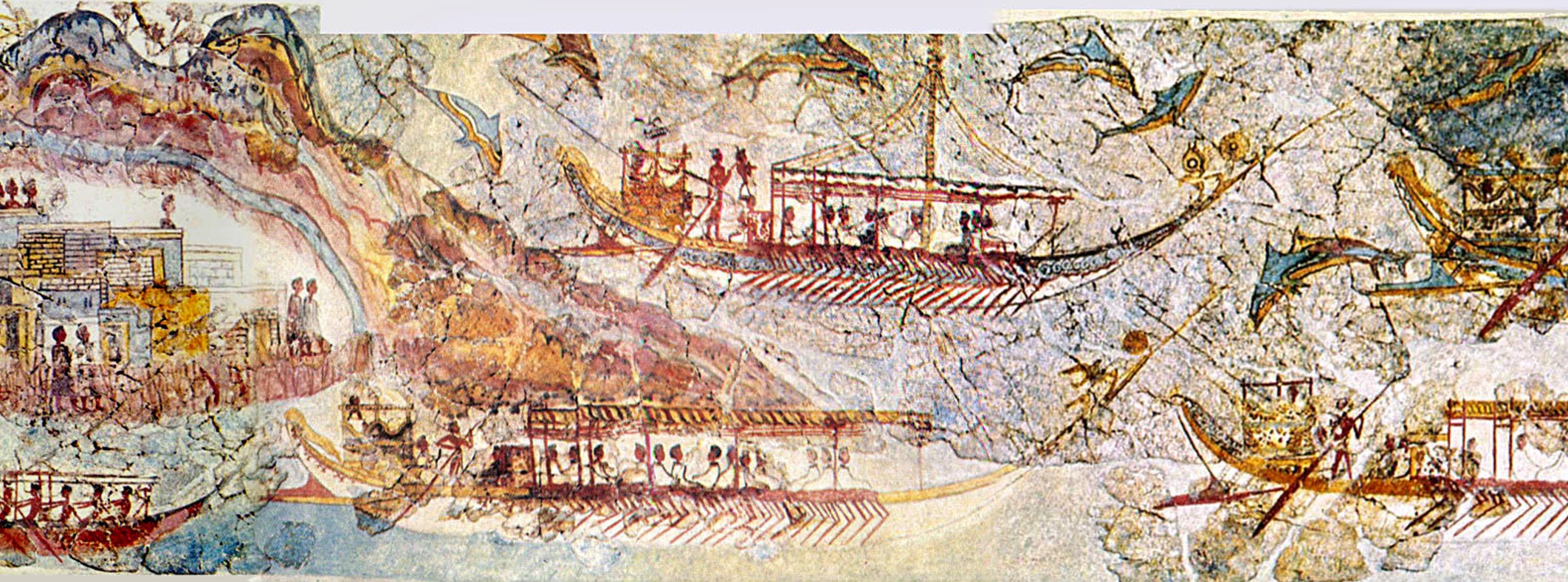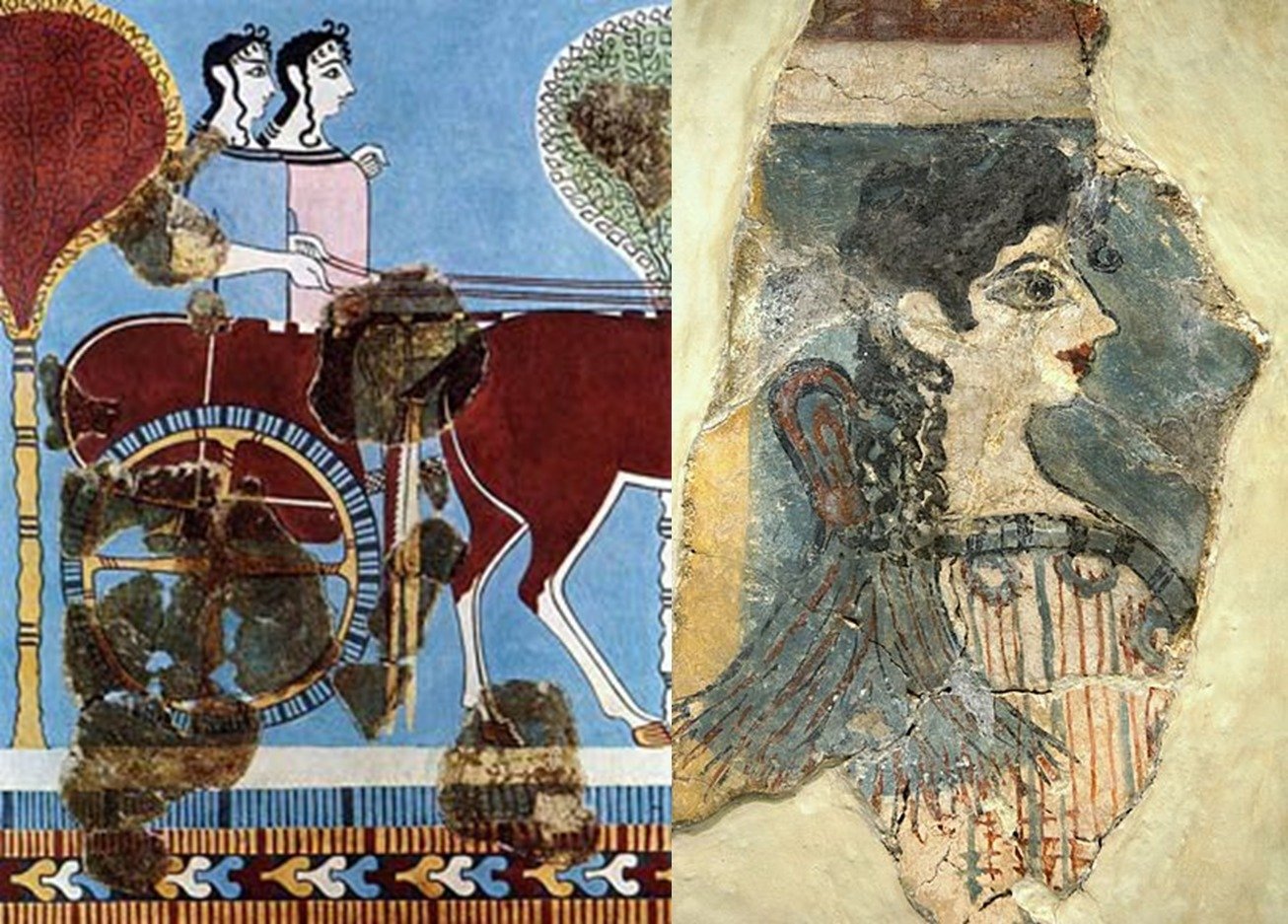The Sea People are Minoan!... damn, this gets so frustrating... Were the Minoan's Atlantis - probably!
Trace
Did the War Between Atlantis and the Greeks Really Happen?

In Plato’s account of Atlantis, found in both Timaeus and Critias, the legendary island civilization supposedly fought a war against the Greeks. This is a vital part of the account, for it is the whole reason why Plato included it in these dialogues.
However, is there any evidence that this legendary war between Atlantis and the Greeks really happened?
Plato’s account of the war against Atlantis
In Timaeus, written around 360 BCE, Socrates expresses his wish to hear an account about Athens in action. Critias responds that he knows of such an account. He then goes on to tell Socrates the story of Atlantis.
According to Critias, who claims that the story ultimately originated from the Egyptians, Atlantis was a rich and powerful island-based naval civilization from the distant past. It dominated a large portion of the Mediterranean. It even attempted to subdue Egypt and Greece.
Critias explains to Socrates that Athens took the lead among those fighting against Atlantis. After everyone else had fallen to Atlantis, the Greeks were finally able to defeat it, thus bringing an end to their reign of terror.
A memory of the Sea Peoples?
Some researchers have attempted to connect this account with the historical activities of the Sea Peoples. The Sea Peoples were a group of nations mentioned in Egyptian records as a cause of significant trouble between the years 1270 and 1175 BCE. Although there is still debate regarding the identity of each people mentioned, scholars generally agree that at least some of them were European nations of the Mediterranean coastlands.
Given that Egyptian records tell of a large war in the early 12th century BCE against these peoples, it might be tempting to connect this event to the legendary war against Atlantis since the Egyptians were involved in that war according to Plato’s dialogues.
However, there are two major problems with this interpretation. Firstly, Plato’s account presents the Greeks as defeating Atlantis after everyone else had been defeated. In contrast, the Egyptians were the ones who defeated the Sea Peoples.
An even bigger problem is that one of the Sea Peoples attacking Egypt were the Denyen. The name appears to be the Egyptian form of ‘Danaans,’ one of the ancient Greek names for themselves. This would put the Greeks on the same side as Atlantis in this war against Egypt, which is the exact opposite of what Plato described. Therefore, the war against the Sea Peoples does not match the war against Atlantis.
A more likely origin

It is more likely that the war between Atlantis and Greece can be traced back to an even older historical event. Rather than connecting the tale of Atlantis with the Sea Peoples, the Encyclopedia Britannica suggests that this legend may originate with the Minoan civilization. This civilization thrived in the Bronze Age.
Like Plato’s Atlantis, the Minoans were a rich and powerful island-based naval civilization. They were situated just before the Gulf of Laconia, one of the places known as the Pillars of Heracles in antiquity. The Minoans also had several colonies on the opposite continent in Asia Minor, matching what Plato wrote. Various other aspects of their civilization also match what Plato wrote.
Although we do not have detailed written records of Minoans’ activities in the Bronze Age, we do know certain things. It is true that they appear to have primarily been traders rather than conquerors. However, we know that there was a tradition of their engaging in a violent conquest of at least one part of the Levant.
Furthermore, the later Greeks described the Etruscans as violent pirates. Yet, they appear to have engaged in trading practices that were normal for the time. The Greeks evidently cast them as pirates because they were threatened by their trading practices. The same would likely have applied to the Minoans, who dominated trade in that earlier era.
The historical war between Atlantis and the Greeks
Archaeology has uncovered some significant remains on Crete, the homeland of the Minoans. It has been found that Linear A, the script of the Minoans, suddenly stopped being used around 1450 BCE. In its place, Linear B appeared on official tablets, written in Mycenaean Greek.
Furthermore, the material culture of the island shifted strongly towards that of the Mycenaean Greeks. Across the island, archaeologists have found evidence of destruction of major administrative sites.
In view of this evidence, it is clearly evident that the Mycenaean Greeks invaded and conquered Minoan Crete. This put an end to the Minoan civilization as a dominant power in the region. Moreover, this is very likely the origin of the legendary war between Atlantis and the Greeks. Just like in the legend, the Minoan civilization lost this war against the Greeks.
Although Plato does not specifically describe the Greeks as conquering Atlantis, he does state that other Mediterranean nations were freed, thus clearly refuting the idea that it was a mere victory against the forces of Atlantis in Greece itself.











